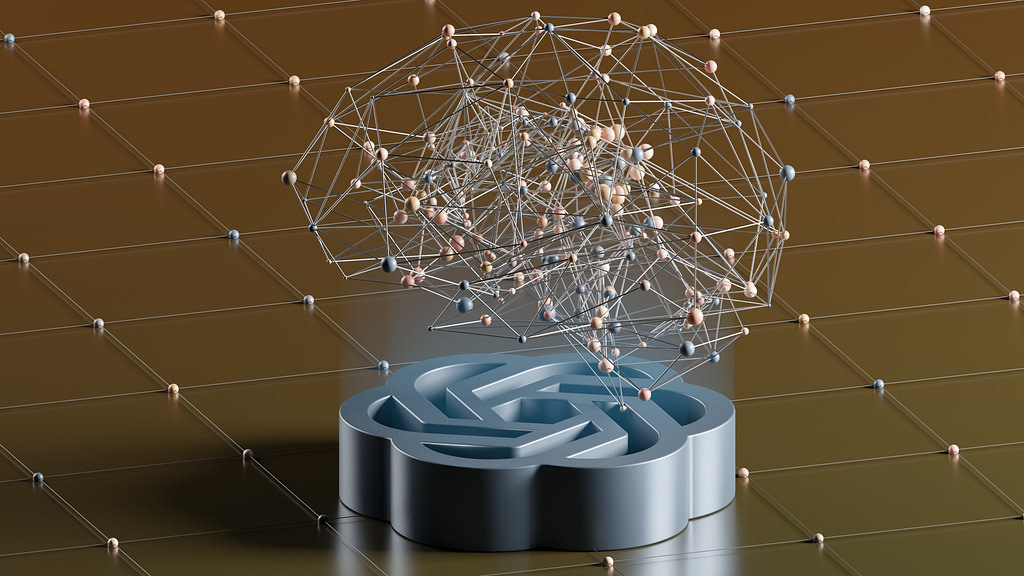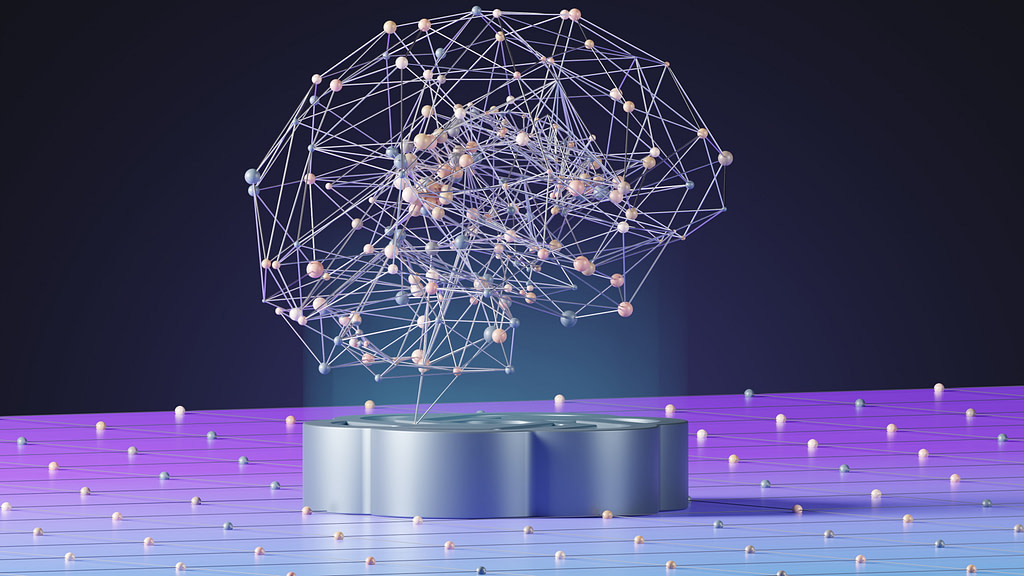In a world where artificial intelligence isn’t an abstract concept anymore but a standard woven into (soon) all business areas and digital tools we use, AI-powered improvements become an integral element of every business growth. But naturally, to determine what application of artificial intelligence might be the most beneficial for your company, you need clarity on what types of AI you can choose from – and what their capabilities are.
That’s precisely what this article is made for! Whether your company is only at the beginning of its AI journey or you’re looking into taking the next step on this path, this piece will guide you on the most popular types of AI to get you closer to determining how and where to employ artificial intelligence in your business to make the most of it.

The most popular types of AI — what should you know about them?
There are many different types of AI, and the majority are connected to each other. Among the most popular, we can list the following:
Narrow or weak AI
Narrow AI is like a specialist. It’s really good at doing one specific task, like helping you find information online or recognizing your voice commands. Siri and Alexa are examples of this type of AI — they’re smart, but they have their areas of expertise.
Generative AI
Generative AI is like the creative mind. It can make things — art, music, or even text — by learning from existing data. Think of it as AI that can come up with new ideas and create something entirely fresh, like writing a unique story or composing a new piece of music.
Currently, the best-performing generative AI models are GPT-4, GPT-3.5, and Llama 2. If you’re curious how they compare, you can find the most comprehensive article on this topic here on our blog: Llama 2 vs. GPT-4 vs. GPT-3.5.
Natural Language Processing (NLP)
That’s exactly what generative AI is based on – and what makes it sound so natural. NLP makes machines understand and “talk” like humans. It’s the tech behind chatbots and language translation, and it’s the reason those virtual assistants are able to grasp the meaning of your words and give you a sensible reply or translate a message into another language.
Machine Learning (ML)
ML means all the techniques and processes that bring AI closer to understanding human cognition. You can often hear people use the names “artificial intelligence” and “machine learning” interchangeably, but in fact, they are not the same. Machine learning is a subset of AI, a way to “achieve” artificial intelligence — it’s like teaching computers to learn from experience. It’s the reason your email knows what’s spam and what’s not. ML algorithms learn patterns and use that knowledge to make predictions or decisions.
Read also: The difference between machine learning and AI
Deep Learning
Moving further down this line, we get to deep learning, a subset of machine learning. It’s a method that utilizes artificial neural networks to allow systems to train themselves, much like humans do. Imagine it like a brain with lots of interconnected neurons. It’s excellent at tasks like recognizing faces in photos, understanding language, and even beating humans at complex games.
There are many types of neural network architectures, and they include convolutional neural networks (CNN) that can be used, e.g., in diagnosing diseases from medical scans, recurrent neural networks (RNN) that can be used, e.g., for assessing the risk of fraudulent credit card transactions, and generative adversarial network (GAN).

Predictive Analytics
It sifts through data to spot patterns and predict what’s coming. It’s your behind-the-scenes assistant, offering insights on customer behavior, sales forecasts, and helping you navigate potential risks. Essentially, it’s about using data to get a sneak peek into the future of your business decisions.
Computer Vision
Computer vision lets machines “see” and interpret the world. It’s used in facial recognition, self-driving cars, sorting out your photos, and many more areas. It’s like giving machines the ability to understand and process visual information. It has become more and more popular in gaming and fitness, allowing for (among others) more interactive gaming experiences and high-level training, even at home.
Read also: How to increase user engagement in online workouts? Computer vision in fitness
Expert Systems
Expert systems are like virtual consultants. They mimic human experts in a particular field — one they’ve been thoroughly trained in. So, if you need advice on medical diagnoses, financial planning, or troubleshooting computer problems, expert systems can help.
Read also: Developing a platform for diagnosing mental health conditions
Robotics
Robotics combines AI with physical machines. Think of robots assembling cars, vacuuming your living room, or even performing surgery. AI makes these robots smart, allowing them to navigate and perform tasks autonomously, often with minimal human oversight. But don’t get me wrong! Humans still play a significant role in the world of robotics (and AI in general). You can read more about it here: Mistakes of AI adoption — the underestimated human factor.
Now that we have cleared up the possibilities of the most popular types of AI, let’s take a look at what artificial intelligence can do for your business!
How can AI improve business? Examples
There is a whole variety of business use cases for artificial intelligence — and many solutions employ multiple types of AI to achieve the best results. AI can predict call volume in call centers to support staffing decisions, detect fraudulent credit card transactions, forecast product demand, classify customers, filter spam email, predict customer behavior, recommend products that the customers will enjoy, but also detect faulty products on a production line, generate captions for images, power chatbots, provide language translation, generate various texts, images and sounds, and even help diagnose patients. That list could go on and on. So, how to choose the best application of artificial intelligence in business?

AI for business strategy
There are many ways AI can enhance your business strategy efforts, support your decision-making process, and even guide strategic planning.
Predictive analytics in business strategy
Take predictive analytics — it extracts valuable insights from data, anticipates market trends and consumer behaviors to identify patterns, and helps you make informed decisions on product development, pricing, market positioning, etc.
When dealing with competition, AI can evaluate your rivals’ moves and market dynamics, allowing you to adjust your strategies — and boost their effectiveness. Furthermore, AI enhances risk management by identifying potential pitfalls and suggesting mitigation strategies.
In other words, predictive analytics provides an assessment of future trends. Using the available historical data, it:
- reduces churn by identifying the clients who want to leave,
- increases sales by suggesting what the customer wants to buy and determines how much they will buy,
- identifies employees who are likely to leave the company,
- predicts demand for resources, product, and inventory,
- identifies the risk of breakdowns, failures, malfunctions, and errors.
Let’s take a look at a real-life example: a project where we employed predictive analytics in a telecom company.
Our client struggled with growing customer churn, a common pain among commodity businesses. The client could not prevent churn due to several factors, including an ineffective customer retention strategy. The first stage of our project aimed to reduce churn by 2 percentage points in the customer segment where churn was highest. The pilot was scoped for 10 months and included a 360 view of each customer, predictive models with churn predictions and product recommendations, and tools providing suggestions on handling churn-prone customers. Ultimately, the project finished in less than six months, with churn dropping by 20%.
NLP and Gen AI for business strategy
But predictive analytics is not the only type of AI that can help you in the business strategy area! Thanks to advancements in NLP and generative AI, it can now easily transform raw data into strategic intelligence — and I mean clear, easily digestible, and actionable insights you can simply adopt in your action plan.
A great example is a project we worked on this year — Caju AI. It’s an innovative Gen AI platform that turns unstructured data from customer interactions into profound business insights that companies can use to enhance their customer relations, operations, or products. You can read more about it in our case study: Building a complex generative AI platform from scratch in only 8 months.

AI in content personalization and recommendation engines
Recommendation engines can be utilized in various areas, including movies, music, books, or other products. These engines will:
- personalize offers based on the customer’s earlier choices and reviews,
- suggest other videos, songs, books, etc. that the customer will like,
- increase conversion rate,
- improve customer experience,
- increase retention and loyalty.
A real-life example: recommendations by Netflix.
80% of the content watched by Netflix users is based on algorithmic recommendations. The system analyzes vast volumes of data to determine what other films or series you will like. The system decides the probability of a user liking a given movie based on a few factors, including the user’s interactions with the service (such as viewing history and ratings), other members with similar tastes and preferences, information about the titles (genre, categories, actors, release year, etc.). It also analyzes data about the user, such as the time of day they watch, the devices they use to watch Netflix, and how long they watch. This way, the algorithms provide users with a list of personalized recommendations, along with the probability of the user liking the suggested content.
AI in customer service and marketing
As we could observe during the whole of 2023, AI’s advancements in text generation became a game-changer in many business areas — starting with customer care and marketing. You have surely heard of content creation tools, where AI, driven by natural language processing and generative capabilities, crafts engaging and contextually relevant content, speeding up the work of marketing teams and allowing specialists to focus on more relevant tasks.
Here, content personalization steals the spotlight. Well-trained AI tailors marketing messages to individual preferences and behaviors, utilizing sophisticated algorithms to predict what content will resonate with specific users. This increases conversion rates and cultivates brand loyalty through a personalized and memorable user experience.
Let’s not forget AI-powered chatbots and virtual assistants, elevating customer interactions in real-time. These smart systems field queries, offer product insights, and guide users through their journey. The result? Improved customer satisfaction and the ability for human resources to tackle more complex tasks.

AI in cybersecurity
As digital businesses grow, the risk of cyberattacks exponentially increases. How to protect against them? AI-powered cybersecurity allows businesses to:
- detect abnormal behaviors and prevent threats
- reduce the number of false alerts
- improve personal data security
A real-life example: Apple’s Face ID
Through ML and neural networks, Face ID enhances biometric authentication by processing users’ facial features and building a model based on key correlations and patterns. At the same time, it is able to “ignore” some inevitable changes, such as different lighting conditions, growing facial hair, or changing hairstyles. Apple claims that with this technology, there is only one in a million chances that you could open your device with a different face.
What industries can benefit from AI?
The above are barely a few examples of areas that could benefit from involving various types of AI. The list could go on and on as, frankly, these days, you can find space for AI applications in every business area — it’s just a matter of how you utilize it, and that depends on your specific business case and needs.
Same with industries. Any industry can benefit from AI, and in every industry the role of AI may have many different meanings. In some cases, it might serve as a tool for speeding up processes; in others, it will be a key to groundbreaking advancements. Sometimes it may be applied as a simple yet effective solution, while in other areas, it might power up huge projects with life-changing potential (e.g. like in science or healthcare).
It’s all about choosing the right AI use case
Today, it’s not about “if” AI can be helpful. It’s about how — and that’s something every business has to figure out for themselves (or with the help of experts), as determining the right AI use case strongly depends on various individual aspects.
If you want to successfully implement AI in your business, you should consider things such as your business’s context, strengths and weaknesses, needs, goals, target group, etc. See how your competitors use AI, think about the processes you need to improve, analyze possible product advancements, and base your decisions on that knowledge.

Different roles of AI in various industries
The cheat sheet you can see above includes only some of the use cases of artificial intelligence in given fields. I haven’t listed all the possibilities — there are just too many. Also, AI is a field that’s constantly developing (and, as we know, lately at a crazy pace), so we can surely expect new use cases in the near future.
Though every organization can benefit from AI, in some industries, its impact plays a more significant role than in others, leading to meaningful transformations. Those fields include healthcare (as well as pharmacy), fitness, education, marketing, cybersecurity, e-commerce, and customer service.
AI in healthcare
AI is reshaping the healthcare industry, acting as a diagnostic powerhouse by analyzing medical records and imaging data for accurate and swift diagnoses. AI-powered chatbots provide instant health advice, enhancing patient engagement. In radiology, AI detects image anomalies, aiding faster and more precise diagnostics.
Genomic data analysis is another frontier where AI shines. It enables personalized medicine by deciphering complex genetic information, allowing healthcare professionals to tailor treatments based on individual genetic profiles. This level of precision ensures that therapies are more effective and aligned with the unique genetic makeup of each patient.
Beyond tasks and processes, AI contributes to the democratization of healthcare. Telehealth platforms powered by AI bring healthcare services to remote or underserved areas, ensuring more equitable access to medical expertise.
Read also: Predictive analytics in healthcare – how to improve the efficiency of a clinic?
AI in finance
Remember when the New York Stock Exchange was full of brokers shouting at the top of their lungs? That’s the picture we see in every movie with Wall Street in the background — but the reality has changed. Now, AI solutions are used to manage investments, collect financial data, or anticipate changes in the stock market.
AI’s prowess extends to algorithmic trading, where smart algorithms powered by machine learning make split-second decisions based on market trends and historical data. It’s akin to having a tireless strategist navigating the complexities of financial markets.
Also, customer service in finance gets a boost from AI — thanks to AI-driven chatbots and virtual assistants, acting as intelligent aides that handle queries, provide account information, and guide users through investment decisions. Here, it’s not just about numbers; AI enhances the customer experience, making financial interactions more seamless.
Credit scoring, a fundamental aspect of finance, benefits from AI’s predictive analytics. By analyzing diverse data points, AI models provide more accurate and inclusive credit assessments, opening up financial opportunities for a broader range of individuals.
Predictive analytics also plays a significant role in risk management. Here, AI becomes a vigilant guardian, analyzing vast datasets to identify patterns and potential threats in real-time, fortifying financial institutions against fraud.
In essence, AI reshapes finance fundamentally, not just by crunching numbers, but by optimizing risk, navigating markets, enhancing customer service, and redefining how financial institutions operate in our digital era.

AI in education
AI helps make education more accessible and individualized. Picture AI-powered tutors adjusting content delivery to match each student’s learning style, making education more engaging and effective. A few years back, it was just a futuristic vision, but not anymore — today, more and more tools and apps work this way.
A well-known example is Duolingo, with its engaging gamification and generative AI-powered features, such as Explain My Answer and The Roleplay. The first one allows users to chat with Duolingo’s mascot, Duo, and get clarification on why the answer was wrong, along with additional examples on the topic. The latter gives the users a chance to practice their language skills in a real conversation.
Apart from apps enhancing the learning process, AI has its part in developing tools for teachers – to support them from the administrative side, but also in developing their own skills, preparing teaching plans and materials, as well as boosting the teaching process itself.
AI’s impact extends globally, breaking down geographical barriers in education. Virtual classrooms, fueled by AI, bring quality education to remote areas. This inclusivity ensures that educational resources and expertise are distributed more equitably, fostering a worldwide community of learners.
What can AI do for your business? — summary
We could spend hours discussing possible applications of various types of AI in different business areas and industries. But, in the end, it all boils down to your business and its operational or strategic needs.
Remember: determining what AI application will be the most beneficial for your company is not something you should do based on general assumptions. If you want your project to be successful, don’t underestimate the importance of this step, and make sure your decisions are based on thorough analysis. Build a strong internal AI team or find yourself a trusted tech partner providing AI development services, and use their expertise to brainstorm, test, and try to ensure your AI investment will pay off.
With today’s advancements, AI can be implemented wherever you need; it can learn almost anything you want it to learn and perform an awe-inspiring range of complex tasks. Undoubtedly, this technology can bring great value to your business — and even shape its future if you only get it right.
